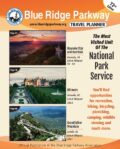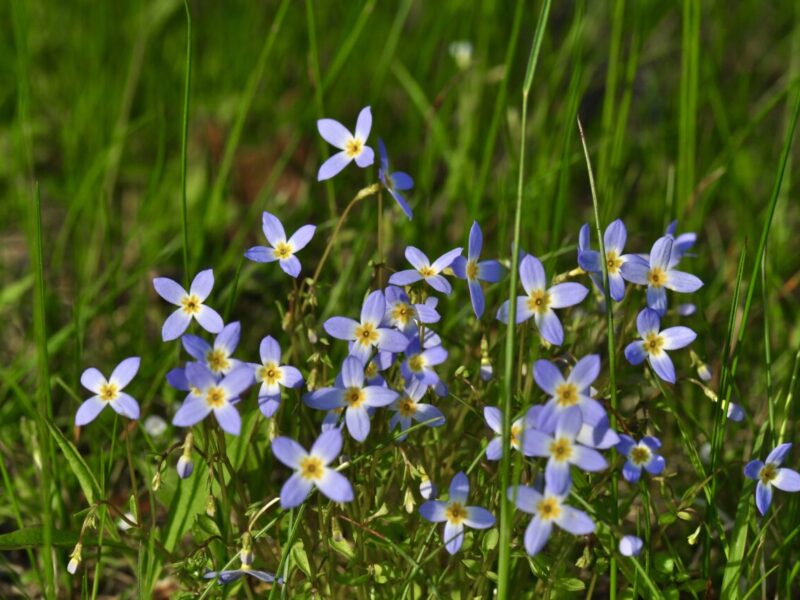
Aldo Leopold’s Sand County Almanac and Sketches Here and There contains a sketch titled “The Good Oak.” In it, Leopold and his wife are sawing through a dead oak to cut it into firewood. As the saw bites into the 30-inch diameter, Leopold describes the historical events which occurred during the 80 years of the tree’s life. He weaves together a tale of human and natural history, saying, “There are two spiritual dangers in not owning a farm. One is the danger of supposing that breakfast comes from the grocery, and the other that heat comes from the furnace.” He continues, “To avoid the first danger, one should plant a garden, preferably where there is no grocer to confuse the issue. To avoid the second, he should lay a split of good oak on the andirons, preferably where there is no furnace, and let it warm his shins while a February blizzard tosses the trees outside.”
Visiting Leopold’s Shack in Baraboo, WI is a special experience for anyone who has read his works, many of which focus on conservation. He must have burned the good oak on the andirons at this tiny family retreat. He also studied phenology- the study of plant and animal biological responses across time- tracking the first bloom date of many local species across numerous years.
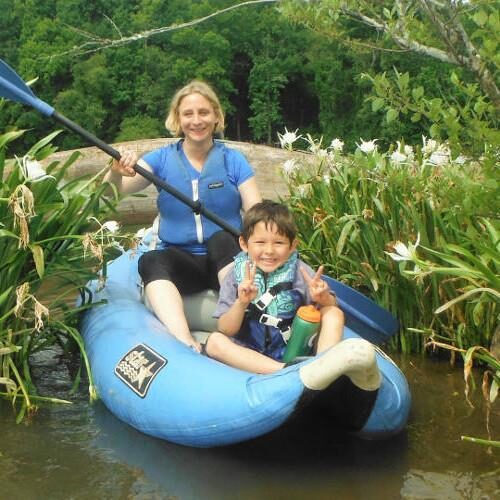
NCOA Spider Lily Kayak Tours
Many visitors share their special experiences about favorite Parkway sites, like eating at The Bluffs Restaurant each Sunday afternoon, camping at Doughton Park or Crabtree Falls or even annual family picnics at Groundhog Mountain. One caller reported that her family member became a blacksmith because of the influence of the blacksmith at Mabry Mill.
Folks often want to visit the Parkway when Craggy Gardens is filled with purple Catawba rhododendron blooms. You’ll likely be looking for the blooms in the live trees and bushes, but remember Aldo Leopold when you see a dead tree serving as wildlife habitat and a food source.
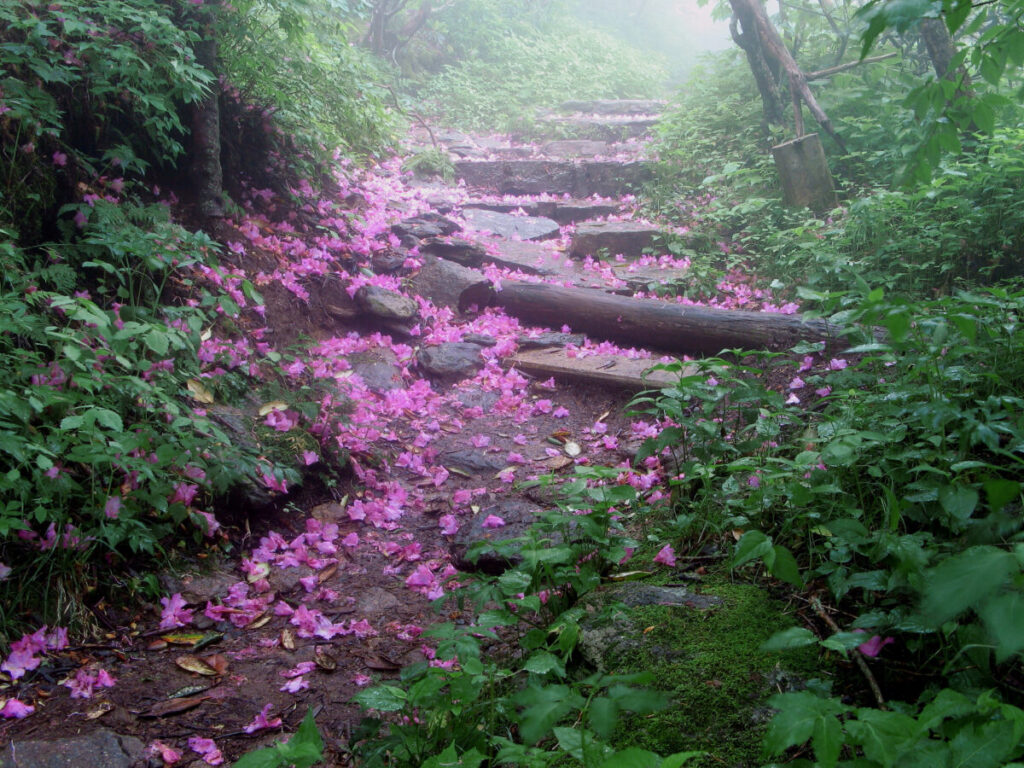
Photo by William A. Bake
When can you see rhododendrons, mountain laurel, and other blooms along the Parkway? Bloom times vary each year based on:
- Length & intensity of winter temperature (the ground must warm up before plants emerge). NOAA has been tracking weather data since 1895 and compares multiple factors against previous years. Check out the previous months’ weather data at https://www.ncdc.noaa.gov/temp-and-precip/us-maps/. See April 2021 average temperatures below.
- The high & low temperature/ average annual temperature (see link above for data comparison).
- Elevation—the Parkway rises from 649 feet at James River in VA (Milepost 63) to 6,053 feet at Richland Balsam in NC (Milepost 431). Leaves and flowers appear first at lower elevations because it is warmer. On May 1, 2021, rhododendrons were in full bloom at James River. Craggy Gardens and Richland Balsam bloom several weeks later because of the difference in elevation.
- Amount of rainfall (affected by elevation- it is wetter and windier at higher elevations).
- Length of daylight–shortest is December 21 and longest is June 21 (~5 hour difference between the two).
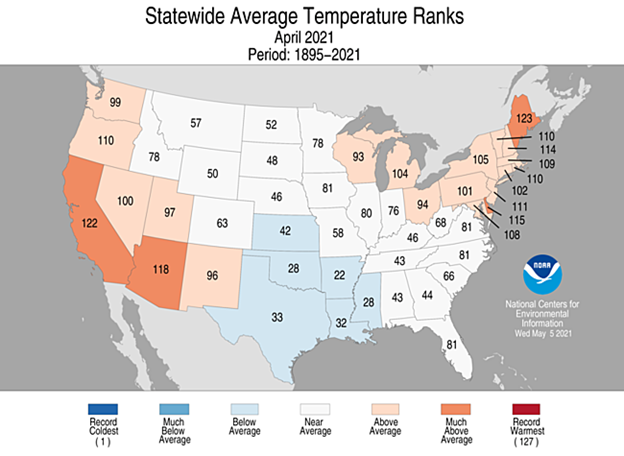
In the Asheville area, the red and yellow maple blooms are long past. The green blooms of yellow poplar are hiding among the cat face leaves and the maroon sweet shrub blooms are peeking out between their shiny green leaves. Chimney Rock at Chimney Rock State Park is a great place to peer along forest trails for pops of spring color, both on the ground and in the air, like witch hazel and azalea. See the What’s in Bloom link on their website for photos.
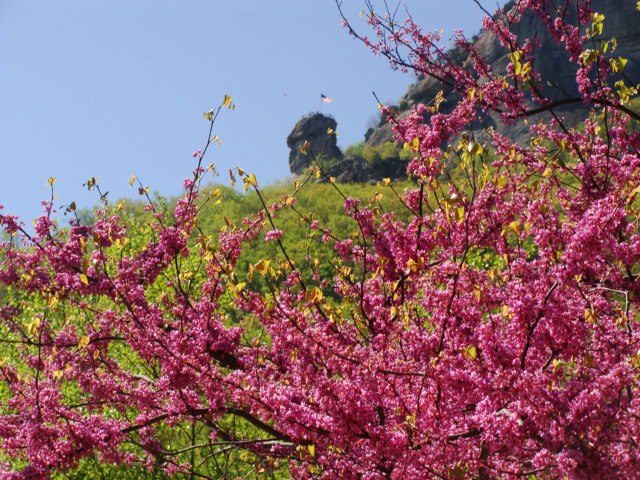
Redbuds blooming in early spring at Chimney Rock
How do you look for blooms?
- Do your homework. Check out these photos and bloom calendar for a general idea of when and where to see specific blooms along the Parkway corridor.
- Think outside the box. There are rhododendrons at multiple sites along the Parkway; check out a different trail or location that might be less busy than Craggy Gardens. Or visit on a weekday rather than a weekend.
- Drive a longer portion of the Parkway. Seeing a wide variety of elevations, climates and aspects offers a greater opportunity for seeing blooms (or fall foliage!). If the rhododendrons aren’t blooming yet at Craggy Gardens, they might be blooming further South at Mt. Pisgah or Graveyard Fields.
- Explore an attraction with hiking trails. Look for damp areas or dry areas just after a rain and elevations where sunlight still reaches the forest floor because the trees haven’t leafed out yet. Attractions are located at various elevations along the Parkway, so different blooms will be visible in different locations.
- Visit a garden or garden shoppe scattered along the Parkway.
- Choose lodging with hiking trails onsite. A variety of campgrounds, cabins and cottages, and resorts and ranches offer a relaxing natural setting with blooms, birds and other wildlife.
- Check out these visitor resources to find the perfect wildflower access for any ability level.
- Purchase a native plant for your yard at Farmer’s Markets and Orchards, and
- Download our mobile app to take these resources with you even when there’s no cell service.
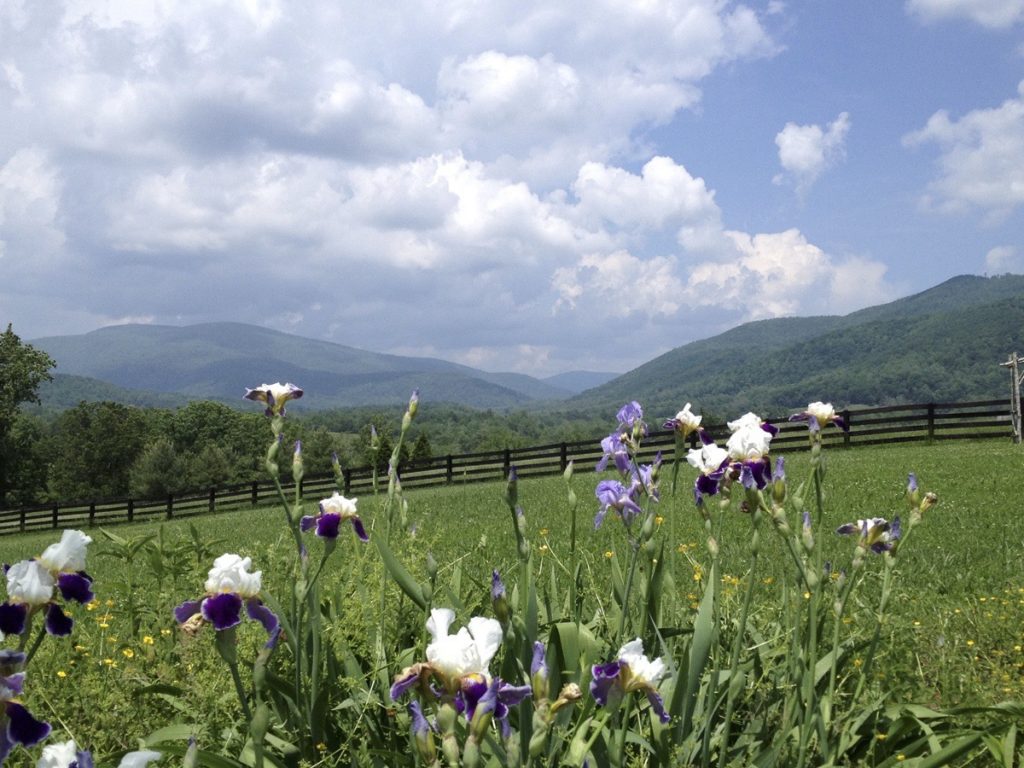
Montfair Resort Farm
A few final tips for your wildflower exploring:
- It is illegal to pick flowers along the Parkway. Leave the plants and seeds to propagate the next generation and for other visitors to see. Wildflowers support ecosystems, providing their pollinators and other animals with food and habitat.
- Stay on the trail—don’t take shortcuts or compact the soil around plants off the trail because this impacts their root systems and ability to draw nutrients and moisture from the soil.
- Be considerate. Check out these seven Leave No Trace Principles that will help you and others enjoy your time in the out of doors.
- Be prepared. Watch out for biting or stinging insects, irritating/ poisonous plants, and snakes camouflaged in the leaf litter.
- Establish only native plants in your own yard because invasives spread and destroy habitat in your yard and neighboring areas.
- Have fun and discover something new. Being in nature is good for you!

